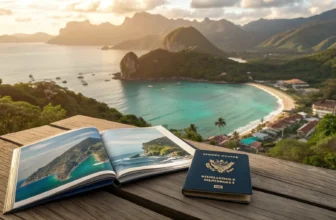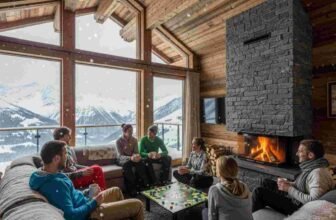
Ever feel like you’ve seen it all? The same overhyped destinations, the same Instagram hotspots, the same endless crowds?
What if I told you that some of the most jaw-dropping, soul-stirring landscapes in America are hiding in plain sight—completely untouched, wildly beautiful, and waiting for you to discover them?
These are the places where nature still feels untamed, where silence is deafening, where you can stand on the edge of something breathtaking and feel like the first person to ever set foot there. If you crave adventure beyond the ordinary, these hidden national treasures are calling your name.
1. North Cascades National Park, Washington
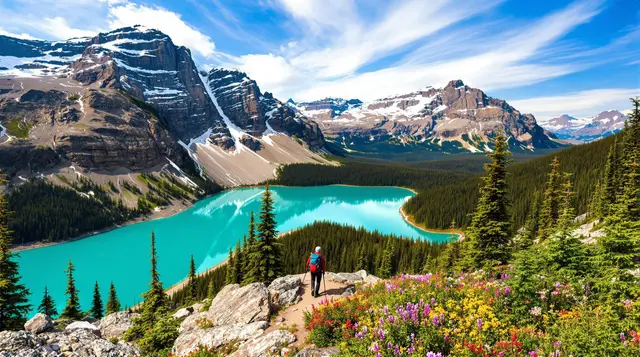
Tucked away in the Pacific Northwest, North Cascades National Park is often overlooked in favor of its famous neighbors like Olympic and Mount Rainier. But if you’re after jaw-dropping alpine scenery, solitude, and rugged adventure, this is where you need to be. The park is home to over 300 glaciers, more than any other U.S. park outside Alaska, and its landscapes look like something straight out of the Swiss Alps—just with far fewer crowds.
Hiking here is an absolute dream, with trails leading past turquoise glacier-fed lakes, dramatic peaks, and wildflower meadows that explode in color come summer. Maple Pass Loop is one of those hikes that should be on every nature lover’s bucket list—it’s challenging, rewarding, and completely breathtaking. If you prefer a more relaxed adventure, take a boat trip to Ross Lake or Diablo Lake, where the electric blue waters look almost too surreal to be real.
Despite its beauty, North Cascades remains one of the least visited national parks in the U.S., which means you can truly experience nature in its purest form. No traffic jams, no overcrowded viewpoints—just you, the mountains, and the sound of wind rushing through the valleys. It’s one of the few places left where you can feel completely disconnected from the modern world.
Quick Travel Tips
- Best Time to Visit: July–September (for clear trails and wildflowers), late June or early October for fewer people.
- Best Hikes: Maple Pass Loop, Cascade Pass, Hidden Lake Lookout.
- Nearest City: Seattle (3-hour drive).
- What to Pack: Warm layers (weather changes fast!), bear spray, and solid hiking boots.
- Pro Tip: Many roads are unpaved and snow lingers late into the season—check conditions before heading out!
2. Great Basin National Park, Nevada
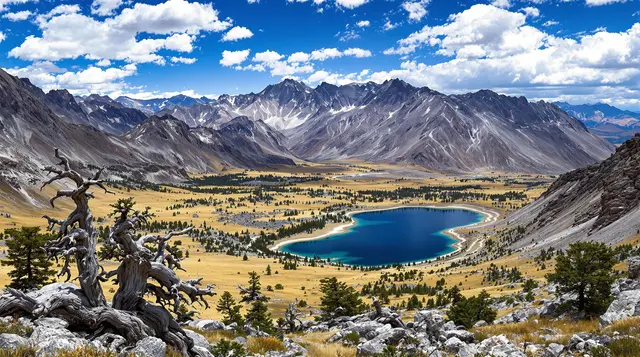
If you think Nevada is all about deserts and neon lights, Great Basin National Park will completely flip your perception. Located in one of the darkest and most remote corners of the U.S., this park is a hidden gem for stargazers, hikers, and anyone who loves wild landscapes. You’ll find everything from ancient bristlecone pines (some over 4,000 years old!) to the massive Lehman Caves, full of surreal stalactites and limestone formations.
One of the must-do experiences here is summiting Wheeler Peak, which stands at 13,065 feet. The hike is tough but unforgettable, offering 360-degree views that stretch across multiple states. And if you’re into astronomy, you’re in for a real treat—this is one of the best stargazing spots in North America, with an International Dark Sky designation. The Milky Way? You’ll see it in all its glory with just the naked eye.
What makes Great Basin so special is its complete lack of crowds. You can go an entire day without seeing another soul, making it feel like you have this entire wild, untouched world to yourself. Whether you’re exploring caves, climbing peaks, or just staring up at the stars, this is a park that rewards those who take the time to visit.
Quick Travel Tips
- Best Time to Visit: Summer (for hiking), Fall (for stunning foliage and fewer crowds).
- Best Hikes: Wheeler Peak, Bristlecone Pine Trail, Alpine Lakes Loop.
- Nearest City: Ely, Nevada (1.5-hour drive).
- What to Pack: Warm gear (temps drop at night), flashlight for cave tours, a telescope or binoculars for stargazing!
- Pro Tip: Book cave tours in advance—they fill up fast in peak season.
3. Lassen Volcanic National Park, California
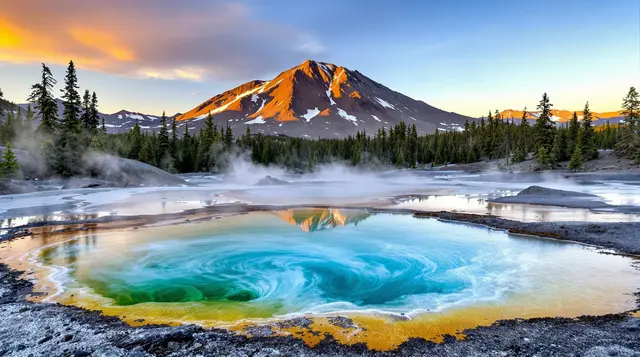
Lassen Volcanic is like Yellowstone’s lesser-known cousin, packed with boiling springs, steaming fumaroles, and surreal volcanic landscapes—just without the massive crowds. The star attraction? Mount Lassen itself, an active volcano that last erupted in the early 1900s. Hiking to its summit is a bucket-list adventure, offering sweeping views of Northern California.
The park’s geothermal features are seriously underrated—visit Bumpass Hell, and you’ll walk through a landscape that looks more like Iceland than California. Boiling mud pots, steaming vents, and vibrant mineral pools make it one of the most unique spots in the park. In winter, the park turns into a snowy paradise, perfect for cross-country skiing and snowshoeing.
Lassen Volcanic is also a haven for solitude seekers. Even at peak times, you’ll find quiet trails and hidden alpine lakes where you can just soak in the beauty of the wilderness. Whether you’re chasing adventure or just want to see one of the most geologically fascinating places in the U.S., Lassen deserves a spot on your list.
Quick Travel Tips
- Best Time to Visit: Summer (for hiking), Winter (for snow sports).
- Best Hikes: Lassen Peak Trail, Bumpass Hell, Kings Creek Falls.
- Nearest City: Redding, California (1-hour drive).
- What to Pack: Sturdy hiking shoes, extra water (it gets hot!), camera for stunning volcanic landscapes.
- Pro Tip: Visit at sunrise to see steam rising dramatically from the geothermal areas.
4. Guadalupe Mountains National Park, Texas
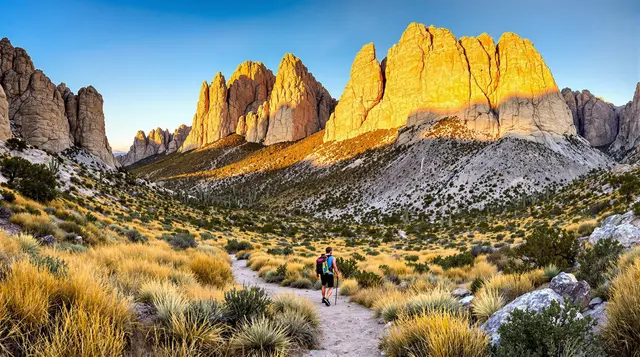
If you think Texas is all flat plains, think again—Guadalupe Mountains National Park is home to the four highest peaks in the state, along with some of the best hiking in the Southwest. The main highlight is Guadalupe Peak, the “Top of Texas,” standing at 8,751 feet. The climb is tough but worth every step, offering breathtaking panoramic views of the Chihuahuan Desert.
The park is also home to McKittrick Canyon, famous for its fall colors that rival anything in New England—a rare sight in the desert! And if you’re into caves, don’t miss Carlsbad Caverns, just a short drive away.
Guadalupe Mountains is one of the least-visited national parks, making it a perfect spot for true solitude and adventure. Whether you’re scaling peaks or just soaking in the vast desert landscape, this park is a hidden treasure of the Southwest.
Quick Travel Tips
- Best Time to Visit: Fall (for stunning foliage), Spring (for mild weather).
- Best Hikes: Guadalupe Peak, McKittrick Canyon, Devil’s Hall.
- Nearest City: El Paso, Texas (2-hour drive).
- What to Pack: Sun protection, extra water, and layers for cool nights.
- Pro Tip: Start hikes early—Texas heat is no joke!
5. Capitol Reef National Park, Utah

Often overshadowed by Zion and Bryce, Capitol Reef is Utah’s best-kept secret. The park is a mix of stunning red rock cliffs, winding canyons, and historic orchards, where you can even pick fresh fruit in season.
One of the best ways to experience the park is by hiking Cassidy Arch (named after Butch Cassidy), which offers epic views over the rugged desert landscape. The Scenic Drive is also a must, winding through surreal rock formations.
Capitol Reef is the kind of place where you can explore without the stress of massive crowds, making it a perfect destination for those who love off-the-beaten-path adventures.
Quick Travel Tips
- Best Time to Visit: Spring & Fall (cooler temps, fewer crowds).
- Best Hikes: Cassidy Arch, Hickman Bridge, Grand Wash.
- Nearest City: Torrey, Utah.
- What to Pack: Lots of water, a good camera for insane red rock views.
- Pro Tip: Try the homemade pies at Gifford House!
6. Black Canyon of the Gunnison National Park, Colorado

If you love dramatic landscapes and heart-stopping viewpoints, Black Canyon of the Gunnison will blow your mind. It’s like the Grand Canyon’s moodier, more mysterious sibling—steep, dark, and unbelievably deep (2,700 feet in some areas!). The sheer black rock cliffs plunge into the Gunnison River, creating one of the most jaw-dropping and least-visited national parks in the U.S.
The best part? You won’t have to fight crowds for a great view. The South Rim Drive has a handful of breathtaking viewpoints where you can stop, take in the scenery, and snap some of the best canyon photos of your life. If you’re up for a short but epic hike, Warner Point Nature Trail gives you a front-row seat to the canyon’s most striking rock formations.
For the truly adventurous, there’s canyon scrambling and rock climbing, but be warned—it’s some of the most extreme terrain in any national park. Even if you stick to the scenic overlooks, though, Black Canyon delivers the kind of wild, untamed beauty you won’t forget.
Quick Travel Tips
- Best Time to Visit: Spring & Fall (summer gets hot, and winter can be icy).
- Best Hikes: Warner Point Nature Trail, Rim Rock Trail.
- Nearest City: Montrose, Colorado (30-minute drive).
- What to Pack: Binoculars (for spotting falcons and eagles!), sturdy hiking shoes.
- Pro Tip: If you want awe-inspiring sunrise views, head to Pulpit Rock Overlook before dawn.
7. Isle Royale National Park, Michigan

If you’re craving total wilderness and true off-grid adventure, Isle Royale National Park is the place to be. Located on an island in the middle of Lake Superior, this park is only accessible by boat or seaplane, and once you’re there—it’s just you, the moose, and the wolves. Seriously, this park is home to one of the last naturally functioning predator-prey ecosystems in the U.S., with an ongoing study of its moose and wolf populations.
Unlike other national parks, there are no roads here—only rugged trails, pristine lakes, and pure, uninterrupted solitude. Backpacking and kayaking are the best ways to explore, and the feeling of being so remote is unlike anywhere else in the lower 48 states.
Camping here is a backcountry experience like no other, where you’ll fall asleep listening to the waves of Lake Superior lapping against the shore. It’s not an easy place to get to, but that’s part of the magic—once you arrive, you’ll feel like you’ve discovered a secret world.
Quick Travel Tips
- Best Time to Visit: June–September (before winter makes it nearly inaccessible).
- Best Hikes: Greenstone Ridge Trail, Rock Harbor Trail.
- How to Get There: Ferry or seaplane from Michigan or Minnesota.
- What to Pack: Mosquito repellent, waterproof gear, a good map (no cell service!).
- Pro Tip: Reserve ferry tickets early—they book up fast, and there are limited trips.
8. Channel Islands National Park, California
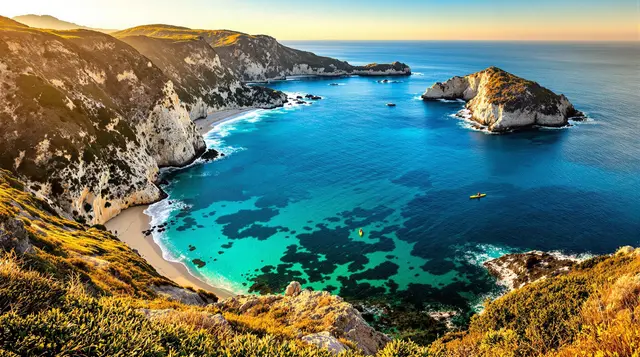
If you want to experience California’s rugged coastline without the crowds, Channel Islands National Park is a dream destination. This park is made up of five islands off the coast of Southern California, each with untouched beaches, sea caves, and wildlife found nowhere else on Earth.
One of the most epic experiences here is kayaking through the sea caves on Santa Cruz Island—think crystal-clear waters, towering cliffs, and seals lounging on the rocks. You can also hike along the wildflower-covered cliffs and feel like you’ve been transported to some far-off, magical land.
The best part? There are no cars, no hotels, and no cell service. Once you step onto the islands, you’re completely off the grid, surrounded by nature in its purest form. Whether you’re hiking, snorkeling, or just soaking in the views, Channel Islands is an adventure you won’t forget.
Quick Travel Tips
- Best Time to Visit: Spring (wildflowers) or Fall (better water conditions for kayaking/snorkeling).
- Best Hikes: Cavern Point Loop, Scorpion Canyon.
- How to Get There: Ferry from Ventura, CA.
- What to Pack: Seasickness meds (if prone), water & food (no stores on the islands).
- Pro Tip: Keep an eye out for island foxes! They’re super cute and only found here.
9. Hovenweep National Monument, Utah/Colorado
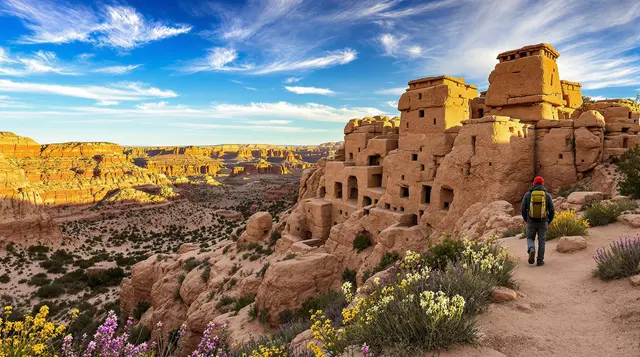
If you’re into ancient history and hidden archaeological wonders, Hovenweep National Monument is a must-visit. This site features incredible Ancestral Puebloan ruins, including towering stone structures that have stood for over 800 years. Unlike Mesa Verde, which gets packed with tourists, Hovenweep remains quiet and peaceful, allowing you to connect with its ancient past.
Walking through the ruins, you’ll see perfectly balanced stone towers, some perched precariously on canyon edges, making you wonder how they were built without modern tools. It’s a humbling experience, and the desert landscape only adds to the mystique.
The park is small but powerful, offering short hikes that lead to some of the best-preserved ancient dwellings in the Southwest. And if you stick around after dark, Hovenweep’s night sky is one of the clearest in the country—perfect for stargazing.
Quick Travel Tips
- Best Time to Visit: Spring & Fall (summer is brutally hot).
- Best Hikes: Little Ruin Trail, Horseshoe & Hackberry Sites.
- Nearest City: Cortez, CO (1-hour drive).
- What to Pack: Sun protection, plenty of water, and a good camera for the ruins.
- Pro Tip: Visit at sunrise or sunset for the best lighting on the ruins!
10. Organ Pipe Cactus National Monument, Arizona
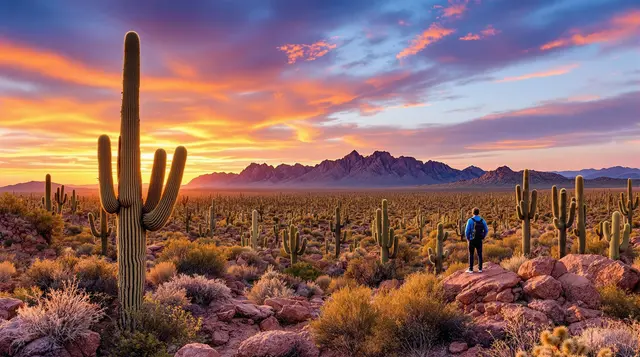
If you think Saguaro National Park is the best desert experience in Arizona, you haven’t been to Organ Pipe Cactus National Monument yet. This place is a stunning and lesser-visited desert paradise, home to forests of towering cacti, rugged mountains, and some of the most breathtaking desert sunsets you’ll ever see.
The main attraction here is, of course, the organ pipe cactus, a rare species that only grows in this region. The Ajo Mountain Drive is an absolute must—it’s a scenic route that takes you through some of the most otherworldly landscapes in the Sonoran Desert.
It’s also one of the best stargazing spots in Arizona, thanks to its remote location. At night, the sky explodes with countless stars, constellations, and even the Milky Way. Whether you’re hiking, camping, or just taking in the vast desert beauty, Organ Pipe is a place that’ll stay with you long after you leave.
Quick Travel Tips
- Best Time to Visit: November–March (cooler weather).
- Best Hikes: Arch Canyon Trail, Bull Pasture Trail.
- Nearest City: Ajo, AZ (40-minute drive).
- What to Pack: Extra water, sunblock, and a flashlight for night hikes.
- Pro Tip: Visit in March-April for a stunning wildflower bloom in the desert.
11. Craters of the Moon National Monument, Idaho
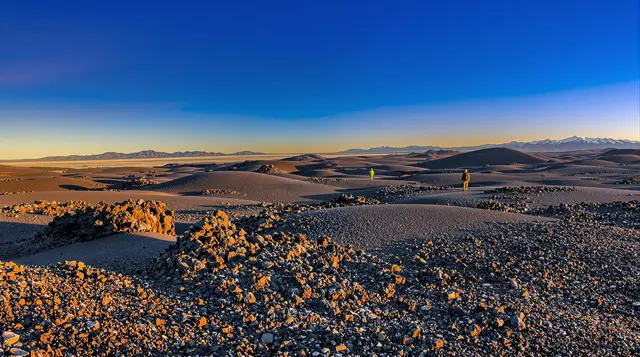
If you’ve ever wanted to walk on the moon without leaving Earth, Craters of the Moon National Monument is your chance. This surreal, otherworldly landscape is a vast sea of hardened lava, complete with spatter cones, lava tubes, and deep craters that make you feel like an astronaut exploring a different planet.
What’s fascinating is that this entire region was shaped by volcanic eruptions between 15,000 and 2,000 years ago, yet it still looks eerily fresh—like the lava could have cooled just yesterday. You can hike across the craggy black rock on trails like Inferno Cone or Caves Trail, where you can venture inside ancient lava tubes.
And here’s something cool: NASA has trained astronauts here because the landscape is so similar to the moon’s surface. If it’s good enough for space explorers, you know it’s worth a visit!
Quick Travel Tips
- Best Time to Visit: Late Spring & Fall (summers get scorching).
- Best Hikes: Inferno Cone, Caves Trail, Tree Molds.
- Nearest City: Twin Falls, Idaho (2-hour drive).
- What to Pack: A headlamp for lava tubes, and sturdy hiking shoes (lava rock is rough!).
- Pro Tip: Come at night! This is one of the best stargazing spots in the U.S.
12. White Sands National Park, New Mexico
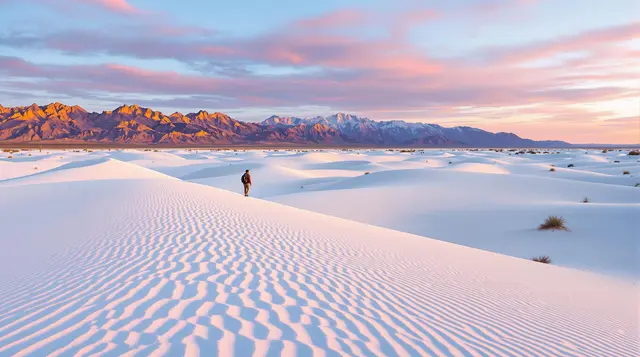
If you think a desert is just dull, brown sand, White Sands National Park is here to change your mind. This place is straight out of a dream, with miles of rolling, pure-white gypsum dunes that glow in the sunlight and shift in the wind like ocean waves.
What makes this place extra special? You can go sledding down the dunes! Just grab a plastic sled (available at the visitor center), and suddenly, you’re a kid again, sliding down soft, snowy-looking hills in the middle of the desert.
And let’s talk about sunsets—White Sands at Golden Hour is pure magic. The dunes take on a soft pink glow, creating a once-in-a-lifetime backdrop for photos or just peaceful reflection.
Quick Travel Tips
- Best Time to Visit: October–April (cooler weather, fewer crowds).
- Best Activities: Dune sledding, Alkali Flat Trail, sunset photography.
- Nearest City: Alamogordo, NM (20-minute drive).
- What to Pack: A sled, sunglasses (the white sand is blindingly bright), water.
- Pro Tip: Visit during a full moon for an unforgettable nighttime experience!
13. Jewel Cave National Monument, South Dakota
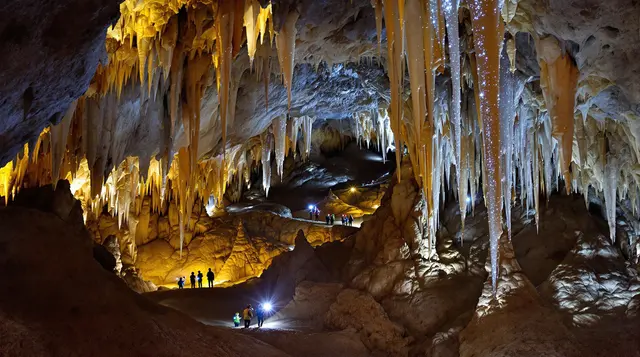
Beneath the Black Hills of South Dakota lies one of the longest cave systems in the world—a glittering, maze-like wonder known as Jewel Cave National Monument. With over 215 miles of mapped passages (and counting!), it’s a subterranean world filled with dazzling calcite crystals, intricate formations, and eerie underground chambers.
For a true adventure, take the Scenic Tour, where you’ll descend deep into the earth, navigating tight passageways and stunning crystal-covered walls that give the cave its name. If you’re feeling brave, the Wild Caving Tour lets you crawl through pitch-black tunnels and squeeze through gaps barely big enough for a person—it’s not for the claustrophobic!
The contrast between the rugged South Dakota landscapes above ground and the hidden world of sparkling formations below makes Jewel Cave a must-see for anyone fascinated by nature’s hidden wonders.
Quick Travel Tips
- Best Time to Visit: Year-round (cave stays cool no matter the season).
- Best Tours: Scenic Tour (easy), Wild Caving Tour (for thrill-seekers).
- Nearest City: Custer, SD (30-minute drive).
- What to Pack: A jacket (cave is always 49°F!), sturdy shoes.
- Pro Tip: Book tours ahead of time—this cave fills up fast!
14. Tule Springs Fossil Beds National Monument, Nevada

Imagine standing in a place where mammoths once roamed, giant sloths lumbered, and saber-toothed cats prowled. That’s what Tule Springs Fossil Beds National Monument offers—a glimpse into an Ice Age world, frozen in time.
Located just outside Las Vegas, this lesser-known monument is home to one of the largest collections of Ice Age fossils in North America. As you walk the trails, you’re stepping over ancient history, with fossils embedded in the desert landscape.
This isn’t a park filled with towering mountains or lush forests—it’s a subtle, quiet place where the past whispers beneath your feet. If you love history and paleontology, Tule Springs is a fascinating, underrated stop that deserves more attention.
Quick Travel Tips
- Best Time to Visit: Fall–Spring (avoid the brutal summer heat).
- Best Activities: Self-guided fossil hikes, photography.
- Nearest City: Las Vegas, NV (25-minute drive).
- What to Pack: A hat, sunscreen, and binoculars (for spotting wildlife).
- Pro Tip: Pair this with a visit to the Nevada State Museum to see incredible fossils up close.
15. Agate Fossil Beds National Monument, Nebraska
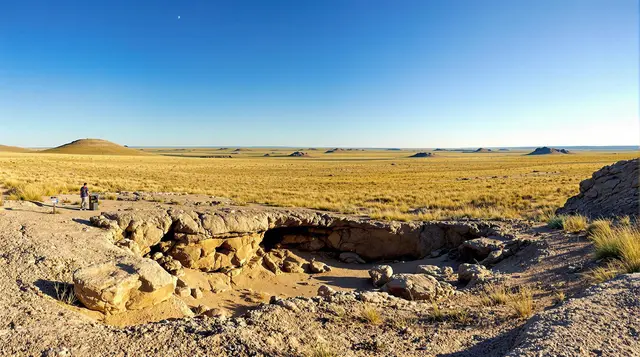
Rounding out the list is another fossil-filled wonder, but this one is set against the stunning Great Plains of Nebraska. At Agate Fossil Beds National Monument, you’ll find massive prehistoric mammal fossils, including ancient rhinos, bearlike carnivores, and bizarre-looking pig-like creatures that once roamed this land millions of years ago.
The park is also home to an incredible collection of Native American artifacts, including priceless Lakota Sioux items gifted to early paleontologists. Walking the trails here, you’ll experience a landscape that looks like it hasn’t changed in millions of years, with rolling golden prairies, rugged rock formations, and a deep sense of history.
It’s a peaceful, off-the-beaten-path kind of place, where you can stand in awe of time itself—both prehistoric and human.
Quick Travel Tips
- Best Time to Visit: Spring & Fall (mild weather, fewer bugs).
- Best Hikes: Fossil Hills Trail, Daemonelix Trail (aka “Devil’s Corkscrew”!).
- Nearest City: Scottsbluff, NE (1-hour drive).
- What to Pack: A good camera, and comfortable walking shoes.
- Pro Tip: Stop by the visitor center—it’s one of the best for learning about prehistoric life!


